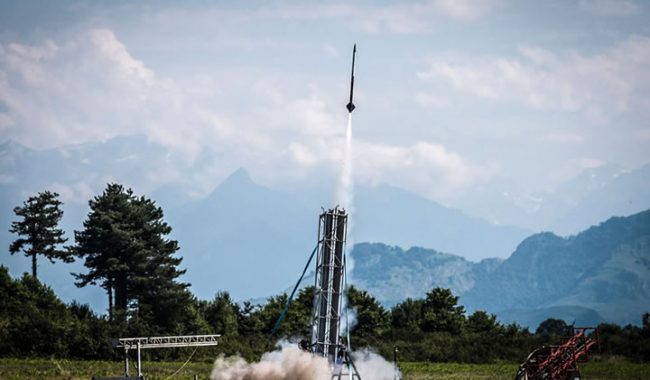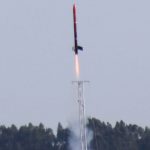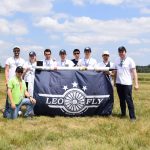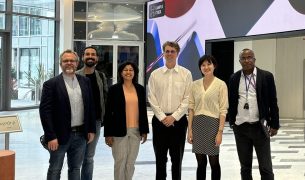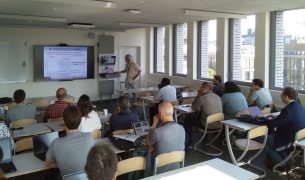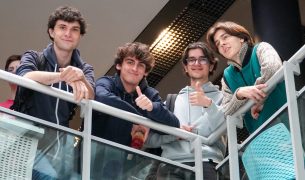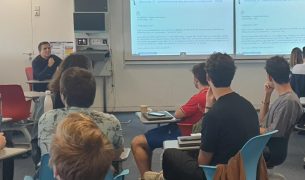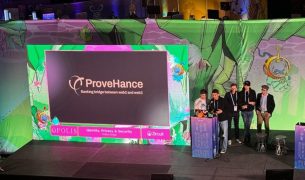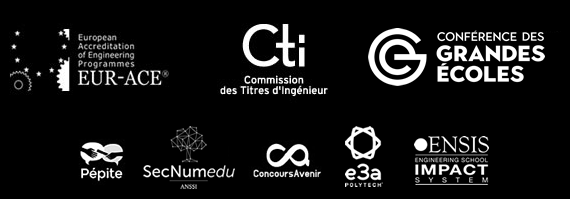For one week, members of the LeoFly project teams, the student association for space and aeronautics enthusiasts, participated in C’Space 2019, organized by Planète Sciences in partnership with CNES.
On the site of the 1st Regiment of Hussars Parachutists of the Ger camp, near Tarbes, it was the peak of achievement during the month July 2019. After a year of work for about twenty engineering students of ESiLV, the launch time of the three rockets has finally arrived.
https://www.facebook.com/LeoFlyPULV/videos/2347919698863803/
“It is with great pride and pleasure that we announce the first three LéoFly rocket take-offs, after months of hard work and extremely strict controls by CNES and Planète Sciences, our rockets have been authorized for take-off and have took off in the day.” LéoFly
C’Space, space within reach of students with CNES and Planète Sciences
C’Space is a launching campaign that was organized for many years by the National Center for Space Studies (CNES) and by the association Planet Sciences. The goal is to allow young people to test the space project they have been working on all year.
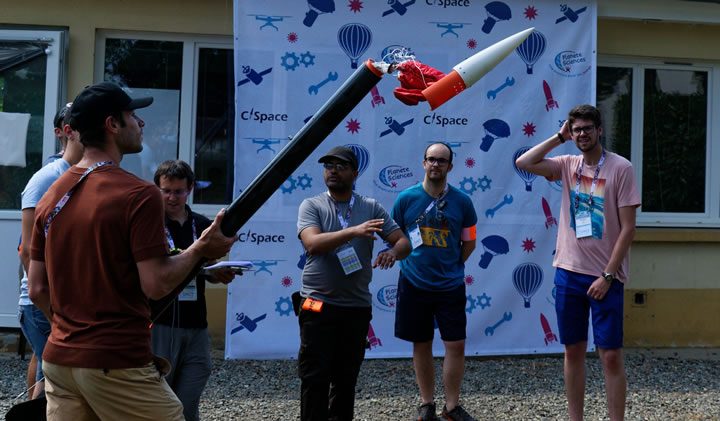
The C’Space is co-organized by Planète Sciences and CNES: here the members of LeoFly test the parachute of the rocket Skyception during the homologation of the latter.
From college clubs to associations of engineering students, in different categories, passionate space and aeronautics teams have a week to finalize their project, probate, and launch their project in the military camp of Ger in Tarbes.
17 experimental rockets, 43 mini-rockets, 5 CanSats, 2 stratospheric balloons and even 30 water flares were implemented by C’Space 2019 participants during this week of intense activity. LeoFly successfully completed the launch of its three rockets, and won the experience award for Skyception, its experimental rocket.
LéoFly, aeronautics and space association of the Pôle Léonard De Vinci (of which ESILV is the engineering school) since 2015, proposes many projects every year: flight simulation, model making, autonomous flying wing, research program PERSEUS with the CNES and for 2 years participation in C’Space.
This year, two launchers were developed by the members of the association, within the framework of their academic projects of 3rd or 4th year. The association is supported by industry partners, who provide skills and equipment: Altran, RS Components, Dassault Systèmes, Mateduc, Hexcel and Alten for the 2019-2020 campaign.
Three rockets to design and launch
For each team handling a rocket, it was necessary to develop in parallel the launcher and its embedded experience. The development being articulated in two successive phases: the design and the execution.
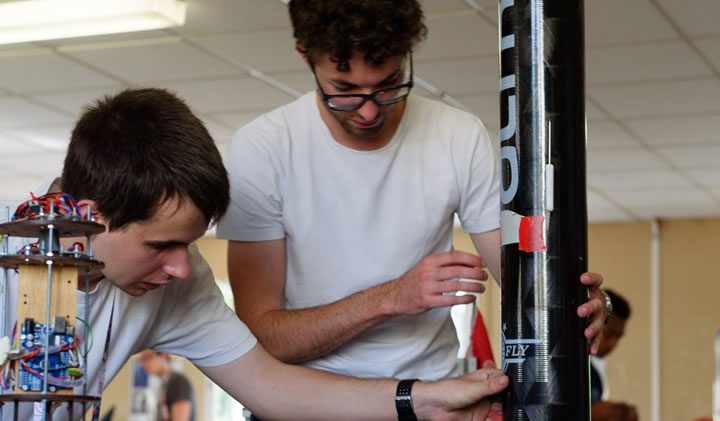
The C’Space launch campaign is the result of one year of work for engineering students.
The three launchers were entirely manufactured by the engineering students at the ESILV premises, thanks to the workshop machining machines and 3D printers of the Devinci FabLab. The components were partially provided to the students of the association by their partners Hexcel, RS Components and Mateduc Composites.
Skyception, a nominal flight!
The purpose of the Skyception experimental rocket was to test a pulsed jet control system: compressed air ejection to cancel roll (rotation of the rocket around its own axis).
The launcher consists of a carbon carrier skin separated into two separate parts and internal aluminum fixing rings. The two parts are connected by a connecting ring also made of aluminum. The lower part accommodates the powder propellant (supplied by CNES during ramp-up on the day of take-off) and the pneumatic rack (for the experiment), while the upper part contains the electronic rack and the control system. ejection of the warhead and parachute. The structure of the modules “electronic” and “ejection” is achieved by 3D printing.
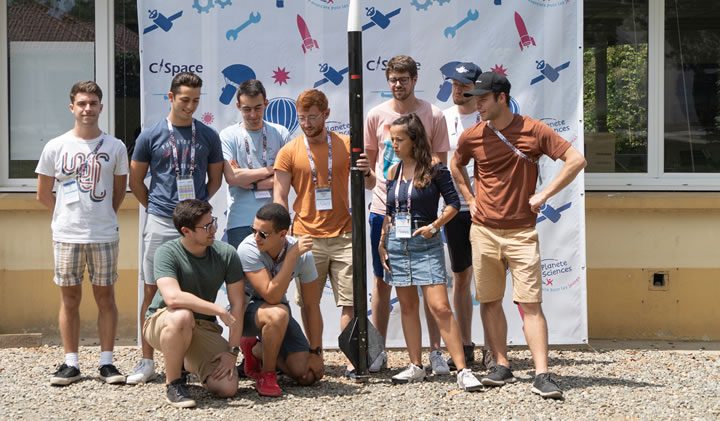
The Skyception rocket succeeds in a nominal flight, and wins the C’Space 2019 experiment award.
The experiment is contained in a wooden rack (machined with a laser cutter). The system includes a compressed air cylinder, a pneumatic circuit and solenoid valves that allow ejection in one direction or the other. The outlets are tangent to the fuselage and are located on the connecting ring (between the two bodies of the rocket).
The Skyception rocket in a few figures:
- Takeoff weight: 7.2 kg
- Maximum Acceleration: 11.7G
- Max Speed: Mach 0.7 (229 m / s or 824 km / h)
- Peak: 2200 m (reached in 17 seconds)
Skynight, the mini-rocket
The purpose of the SkyKnight Mini-Rocket was to test a conventional parachute reclamation system: AutoGyro braking (blades deploy and form a rotary wing that creates drag and slows down as much as a parachute).
The launcher consists of 3D printed parts and PVC parts. Under the warhead, a slot is reserved for all electronic components that measure flight parameters such as altitude and acceleration.
The experiment consists in deploying blades after the climax by operating a ring that held them tight against the body. The blades whose angle has been specifically measured are free to turn creating the drag necessary to braking the rocket must be as effective with a parachute to meet the specifications of the launch campaign.
The Skynight mini-rocket in a few numbers:
- Takeoff weight: 2.6 kg
- Max acceleration: 8.6G
- Max Speed: Mach 0.14 (48 m / s or 172 km / h)
- Peak: 121 m (reached in 5.2 seconds)
Atomic Blond
The AtomicBlond Experimental Rocket was mainly developed last year, it’s the first experimental rocket developed and launched by the association. Its objective was to perform a trajectory survey using embedded sensors (Pitot probe, accelerometer, gyroscope …).
The Atomic Blond in a few figures:
- Takeoff weight: 9 kg
- Max acceleration: 9 G
- Max Speed: Mach 0.5 (165 m / s or 594 km / h)
- Peak: 985 m (reached in 13.5 seconds)
https://www.facebook.com/LeoFlyPULV/videos/510068726404142/
Find Leofly on Facebook for more information on the association and its projects.









